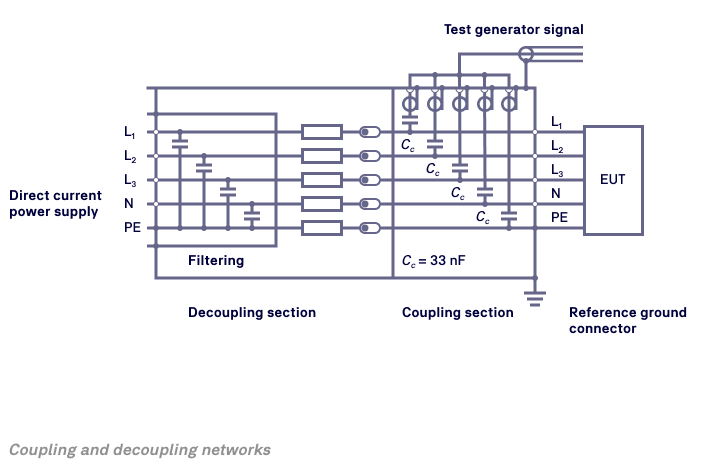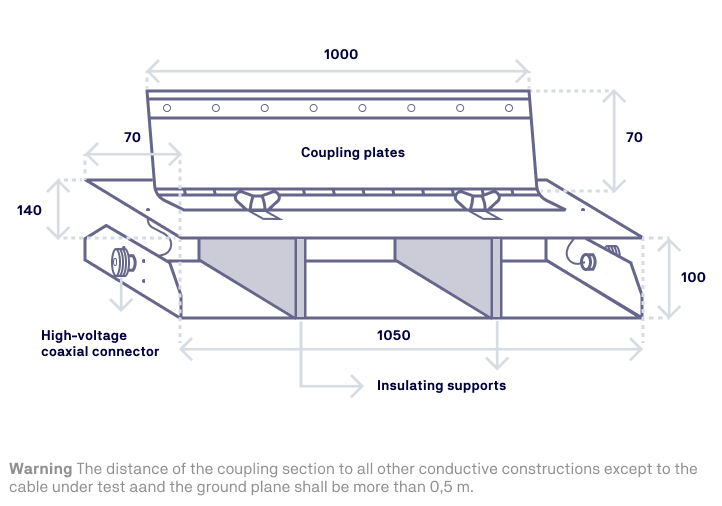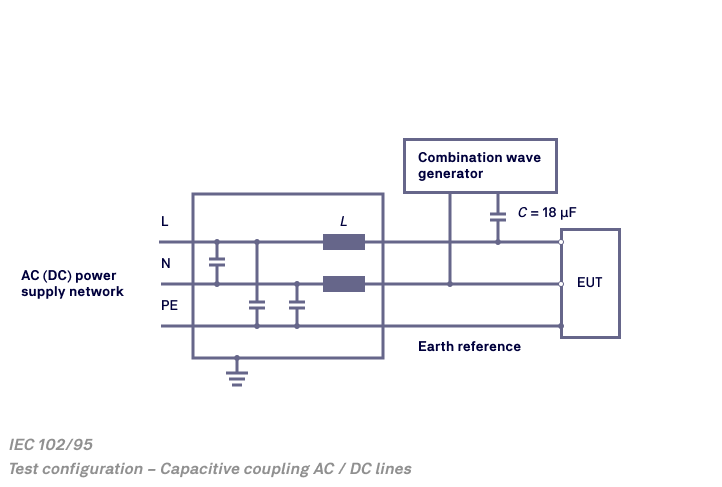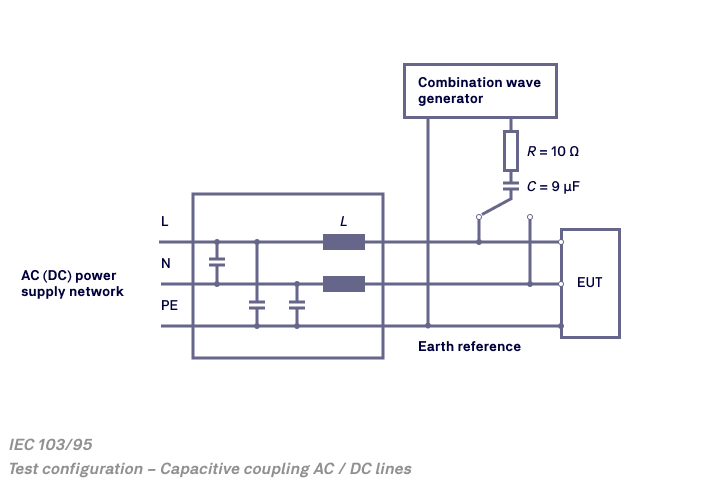The Electrical Transients test checks equipment operation by applying repetitive electrical transient bursts over AC, DC, and signal and telecommunication power lines.
Electrical transients and/or bursts are generated by switching maneuvers in the interruption of inductive loads and contact bounce in relays, motors, compressors, etc.
Other types of equipment that unintentionally produce RF electromagnetic radiation energy include inductive load switches, arc welding equipment, fluorescent lights, etc.
⇒ Levels: Depends on the standard: from 500 V to 4 kV.
⇒ Criterion: After the test, the equipment must operate without any degradation or loss of function. A certain degradation of performance is allowed during the test (criterion B, usually).

Power


Shock waves
- This test checks equipment operation by applying bursts of overvoltage and overcurrent on AC, DC, signal, and telecommunication power lines.
- Unidirectional shock waves are caused by transient overvoltages, such as those caused by lightning strikes or switching operations.
- The effect of a direct lightning strike on the equipment is not considered.
- Application: In common and differential mode. Furthermore, in the case of AC, the wave is coupled at different phase angles.
⇒ Levels: It depends on the standard, which ranges from 500 V to 4 kV.
⇒ Criterion: After the test, the equipment must be able to operate without any degradation or loss of function. A certain performance degradation is allowed during the test (criterion B, usually).
Line – Line

Line – Ground

The latest in UAS/drones testing
Immunity Tests: Essential standards and acceptance criteria
Gain insights into the crucial role of immunity tests, uncovering key standards, limits, and acceptance criteria for optimal equipment performance.
Conducted Immunity Test in electromagnetic environments
Explore the procedures of conducted immunity test for ensuring electrical and electronic equipment’s performance in electromagnetic environments.
Affixing of the CE Marking for drones/UAS
Affix CE marking for UAS under EU regulations. Understand conformity assessment steps, including tests and Notified Body involvement.




